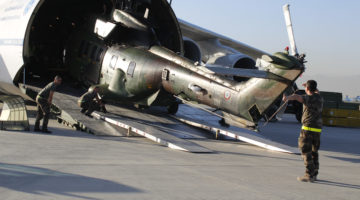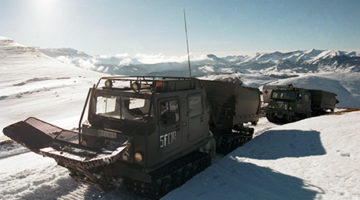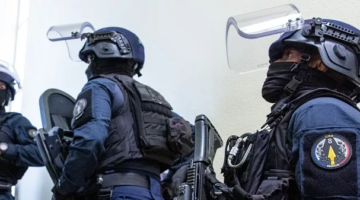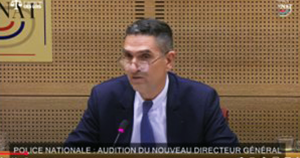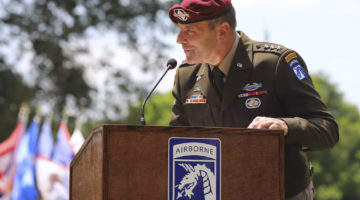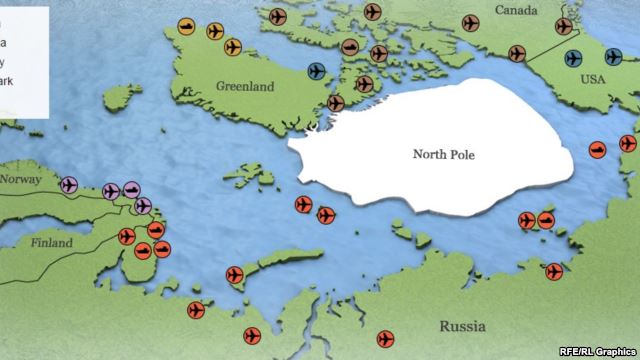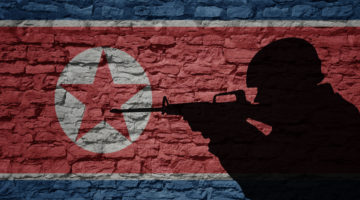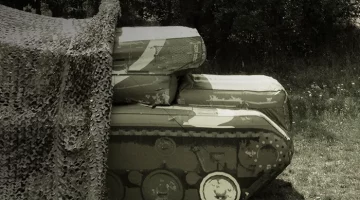by Richard Weitz, Hudson Institute
On March 10, Russia ended its participation in the Joint Consultative Group of the Treaty of Conventional Armed Forces in Europe.
Moscow’s decision effectively formalizes Russia’s lack of interest in working within the Conventional Forces in Europe (CFE) Treaty, and deepens concerns that the Kremlin will ignore arms control until Moscow makes further progress in pursuing and applying its conventional and nuclear armaments program.
On November 19, 1990, the then 16 NATO members (Belgium, Canada, Denmark, France, Germany, Greece, Iceland, Italy, Luxembourg, the Netherlands, Norway, Portugal, Spain, Turkey, United Kingdom, and the United States) and the 6 members of the now disbanded Warsaw Pact (Bulgaria, Czechoslovakia, Hungary, Poland, Romania, and the Soviet Union) signed the original CFE Treaty in Paris.
The Treaty established equal ceilings of five categories of “heavy” conventional weapons for both NATO and the Warsaw Pact. In the geographic zone extending from the Atlantic to the Urals, each group agreed to possess no more than 20,000 tanks, 30,000 armored combat vehicles, 620,000 artillery pieces, 800 combat aircraft, and 2,000 attack helicopters.
The accord also created several sub-regions where both blocs could deploy equal numbers of specified weapons systems. The most important zonal (“flank”) limits were located along Russia’s northeast and southwest borders (near Norway and Turkey). Yet, the Warsaw Pact’s subsequent dissolution and NATO’s ensuing expansion soon disrupted these carefully crafted force balances, based on a bloc-to-bloc structure that no longer existed.
To address the changing European security environment, on November 19, 1999, the thirty countries then party to the treaty met at a heads of state summit in Istanbul and adopted two important agreements.
First, NATO governments agreed to modify the CFE Treaty that replaced the obsolete bloc ceilings and zones with a system of national limits for each treaty party. The adopted treaty draft also reduced the size of the flank zones.
In addition, Russian President Boris Yeltsin indicated Russia would withdraw its forces from the former Soviet military bases in Moldova and negotiate with Georgia on an appropriate Russian military presence (if any) in the separatist regions of Abkhazia and South Ossetia.
Unfortunately, the new Russian government under Vladimir Putin retained a military presence in Moldova and Georgia, citing security and other considerations.
As a result, only four of the signatories—Belarus, Kazakhstan, Russia, and Ukraine (partly)—ratified the 1999 Adaptation Agreement.
The Russian decision to withdraw from the Joint Consultative Group has little practical effect since in 2007, the Russian government “suspended” its participation in the CFE Treaty due to “exceptional circumstances” that jeopardized Russia’s “national interests in the sphere of military security.” The suspension has resulted in Russia’s not providing information about the size, location, and activities of its military forces west of the Ural Mountains, the Russian territory covered by the treaty, for more than seven years.
At the time, the other three dozen governments effectively ignored the Russian decision, calling on Russia to resume participation but continuing to share data and otherwise adhere to the treaty. The Russian military was large but weak, seen as unlikely to present a major threat to its neighbors or most anyone else. Russian defense spending was limited and the command was churning reforms and projects with little practical effect.
But then Russia and Georgia went to war in August 2008.
The Russian military performance was mediocre but good enough to seize Georgia’s breakaway provinces as well as undermine the CFE treaty restrictions.
During the conflict, the Russian forces in the CFE’s North Caucasus flank region exceeded their permissible limits; they eventually occupied all the separatist regions of Abkhazia and South Ossetia.
Russia subsequently recognized these two regions as independent countries, whose governments then allowed the Russia to establish large bases on their territories.
More importantly, the troubled military campaign spurred the Russian leadership to make the reforms needed to produce a more powerful military machine.
Following a delay due to the Georgia War, the treaty parties held intermittent but fruitless negotiations.
For a while, Russian officials proposed that NATO governments ratify the Adopted Treaty and then Russia and the other parties would try to improve it.
However, in an April 2013 speech at a Geneva disarmament conference, Deputy Defense Minister Anatoly Antonov said that the
CFE Treaty and associated arrangements based on the principles of the Cold War are absolutely outdated.
At least Russia will never return to them.
We need a new approach to address the issues of conventional arms control.
In November of last year, Russia’s Foreign Minister Sergei Lavrov declared the treaty “dead,” adding that “there will be no return.”
Meanwhile, Russian officials threaten to challenge other critical pillars of European arms control.
According to the U.S. government, Moscow has violated the 1987 Intermediate-Range Nuclear Forces (INF) Treaty by testing a prohibited missile.
In addition, Moscow violated the Budapest Memorandum whereby Russia, the United States, and the United Kingdom offered Ukraine security assurances in return for giving up its nuclear weapons.
Furthermore, the Russians insist that any new European security architecture must limit the further growth in the size of NATO’s membership and the alliance’s ability to deploy forces near Russian territory. Some Russian analysts interpret the recent CFE withdrawal decision as a riposte to the recent U.S. military deployments in the Baltics.
The Russian government is annexing the two separatist regions of Georgia, Abkhazia and South Ossetia, making the bases their part of Russian territory despite OSCE norms against using military force to change borders.
In recent years, moreover, Russia has conducted large-scale military exercises with little or no advance notice to NATO members or other countries, including one now in Crimea, with nuclear bombers.
These “snap” drills are designed to test the Russian military’s day-to-day readiness without advanced warning to the troops, but also were used to conceal the Russian military operation in Crimea and then to prevent Ukrainian forces from concentrating their attacks against the pro-Russian rebels in eastern Ukraine.
Furthermore, the Russian air force is flying an unprecedented number air patrols in European air space, with Russian military aircraft turning off their transponders to conceal their position from Western air controls. Russians argue that the growing length and precision of long-range strike forces make having regional numerical limitations such as the CFE’s flank zones obsolete. But they also insist that any new conventional arms control treaty to limit carrier-based or remotely piloted airplanes.
Russian calls on the parties to set the CFE aside and negotiate a new legally binding conventional arms treaty will prove exceptionally difficult given the differences between the parties.
Above all, now that the Russian military has shown in Ukraine its improved tactical and operational effectiveness, Moscow is unlikely to agree to serious limits on the growth or application of its military power, at least at present when the Eurasian security order is both threatening and (for Kremlin revisionists) enticing.


